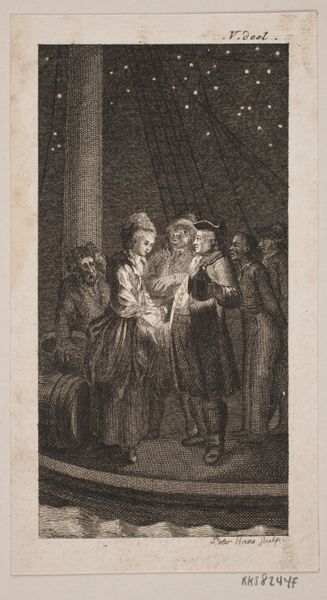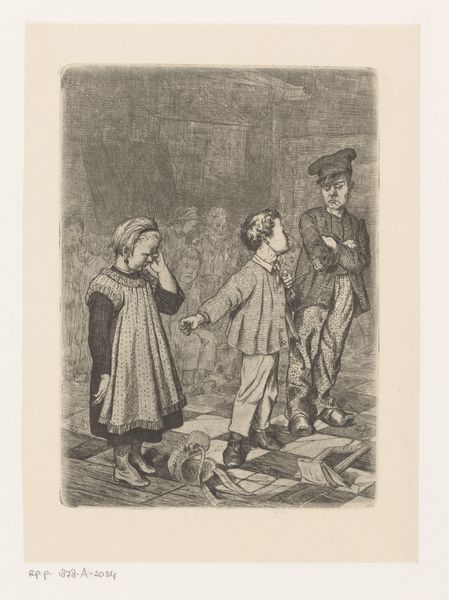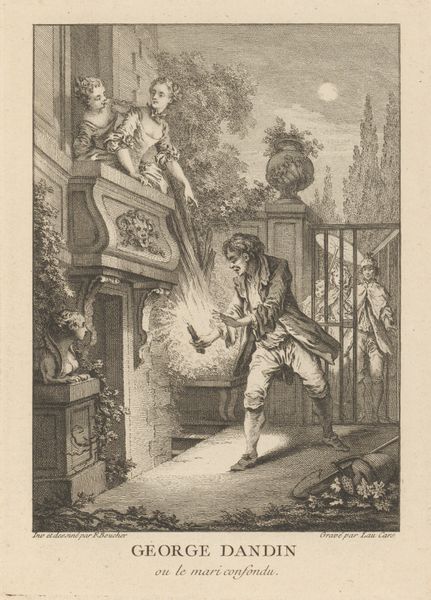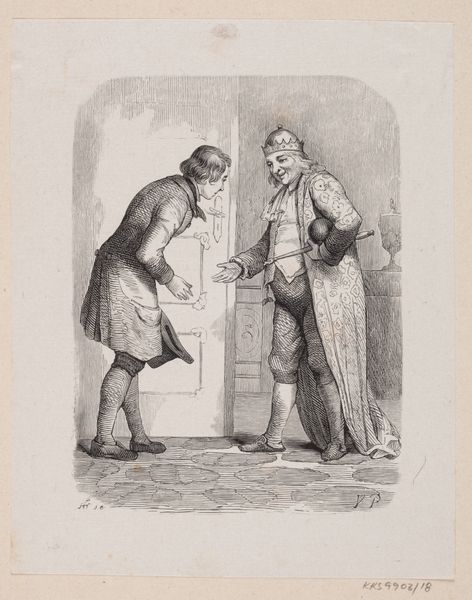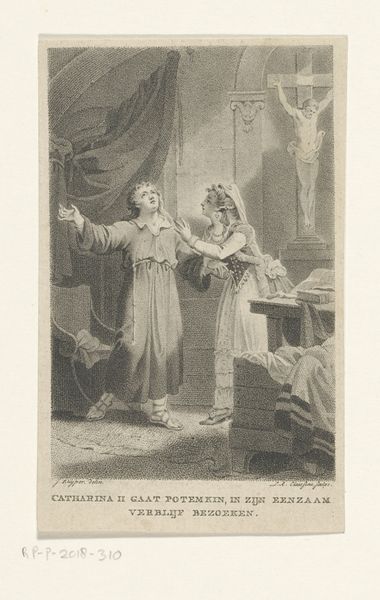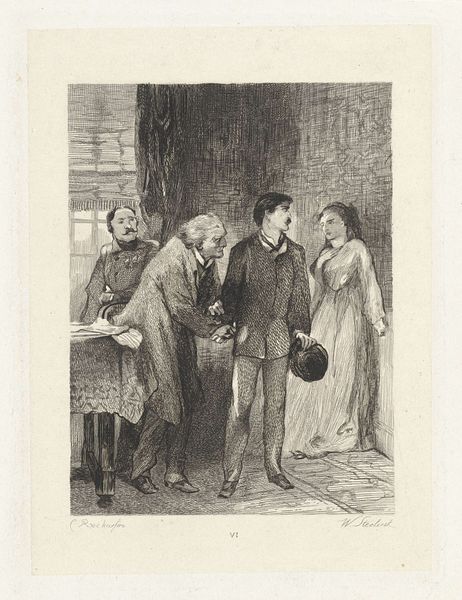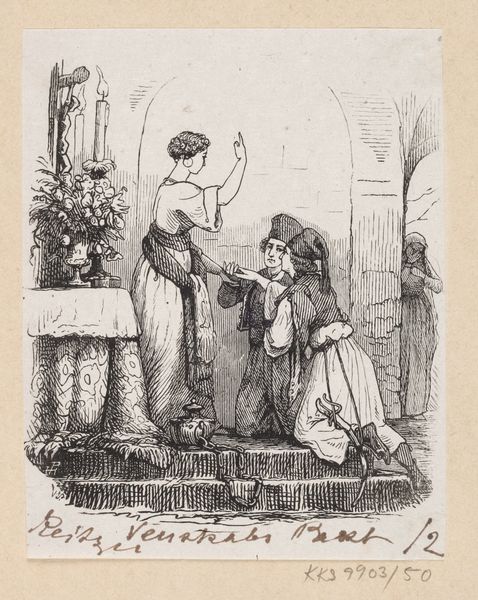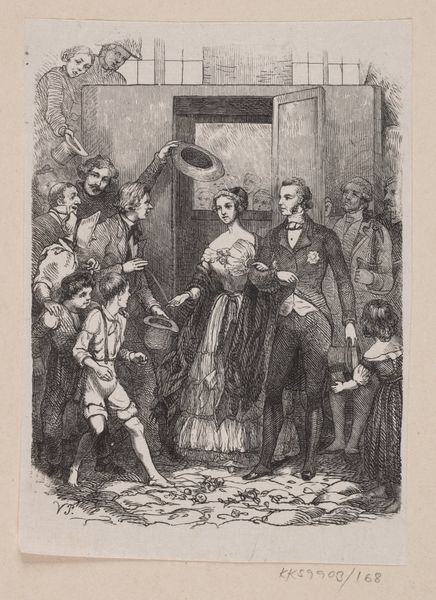
Hostess and Sly (Shakespeare, Taming of the Shrew, Induction, Scene 1) 1825 - 1840
0:00
0:00
drawing, print, paper, engraving
#
drawing
#
narrative-art
# print
#
paper
#
coloured pencil
#
men
#
history-painting
#
academic-art
#
engraving
Dimensions: Sheet: 3 7/16 × 2 9/16 in. (8.8 × 6.5 cm)
Copyright: Public Domain
Curator: Charles Heath the Elder created this engraving, with the somewhat lengthy title of "Hostess and Sly (Shakespeare, Taming of the Shrew, Induction, Scene 1)," sometime between 1825 and 1840. Editor: It has such a dynamic feeling to it, even in monochrome! The poses are so active, full of anger, suspicion, maybe even fear... You instantly understand the scene is fraught. Curator: Indeed. Notice how the Hostess gestures emphatically with her right hand, as though warding off Sly, who in turn raises a hand defensively. The key symbols she has attached to her are indicators of a keeper of knowledge as the host of a bar, and an authoritative leader. The use of shading to add drama gives the drawing depth, hinting at emotional undercurrents beneath the surface. Editor: And the context! "Taming of the Shrew" raises a lot of questions about power dynamics and societal roles. It really invites a contemporary reading: the manipulation, the battle of wills, even the economic realities represented by the tavern... These are not isolated historical issues, they resonate profoundly today, especially concerning gender roles. I have never seen an older picture representing class disparities represented so pointedly. Curator: Absolutely. Shakespeare, despite his own situatedness in time, grapples with universals of human behavior. Note, too, the vine creeping up behind the figures, it might signify intoxication or entanglement within one's fate, reinforcing the sense of inevitability woven into human narratives. Editor: Right. So it’s not just a funny scene, but part of this wider, problematic play that we are still reckoning with today in performance. The lens through which we view power has been so highly shifted from these points of time. The figures in this artwork don't merely represent characters; they signify ongoing discussions about fairness, equality, and representation. It is striking that it would show that then but has the same punch now. Curator: The staying power is pretty undeniable. I always feel like I can glean something new from familiar images when viewing with new and different contexts. Editor: Same here! Revisiting narratives visually prompts revisiting contemporary issues in thoughtful conversation.
Comments
No comments
Be the first to comment and join the conversation on the ultimate creative platform.


